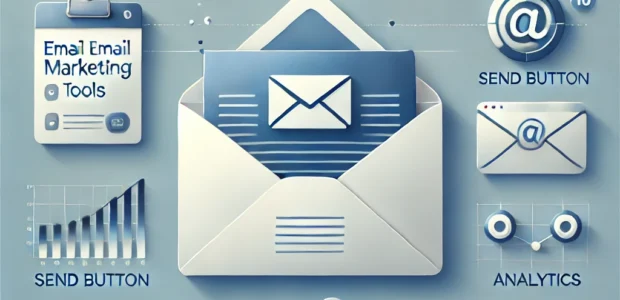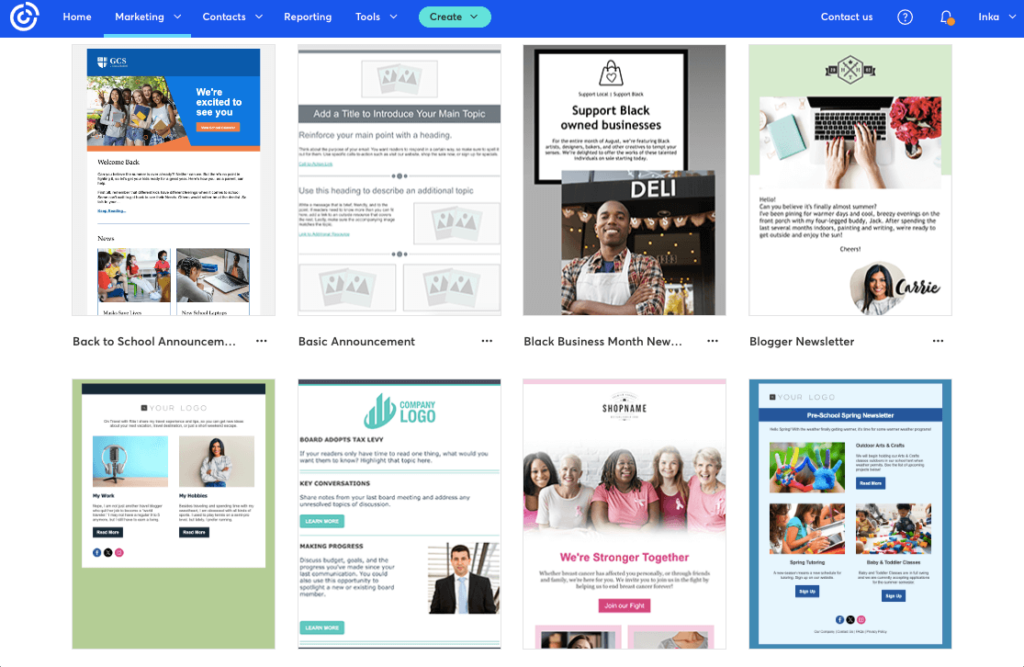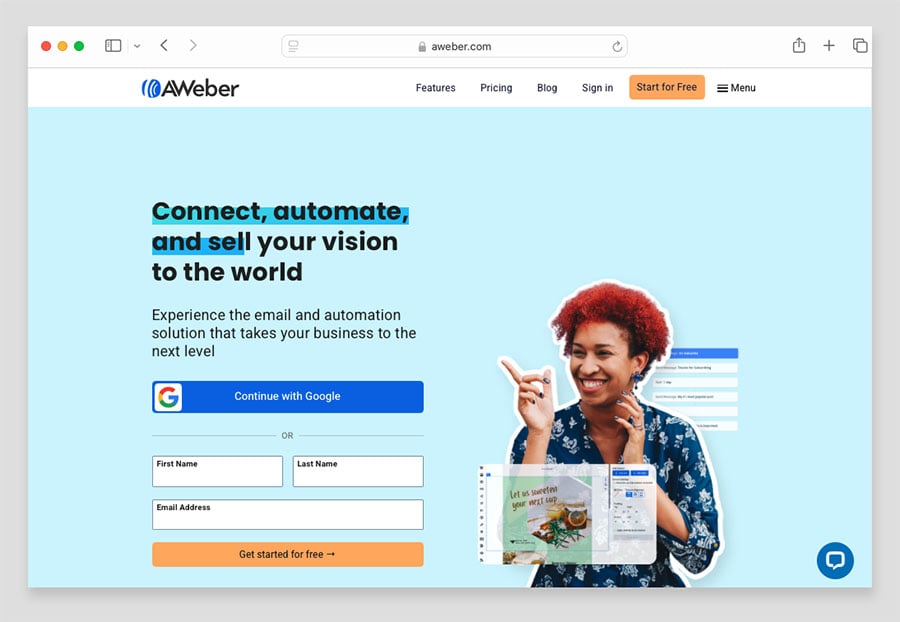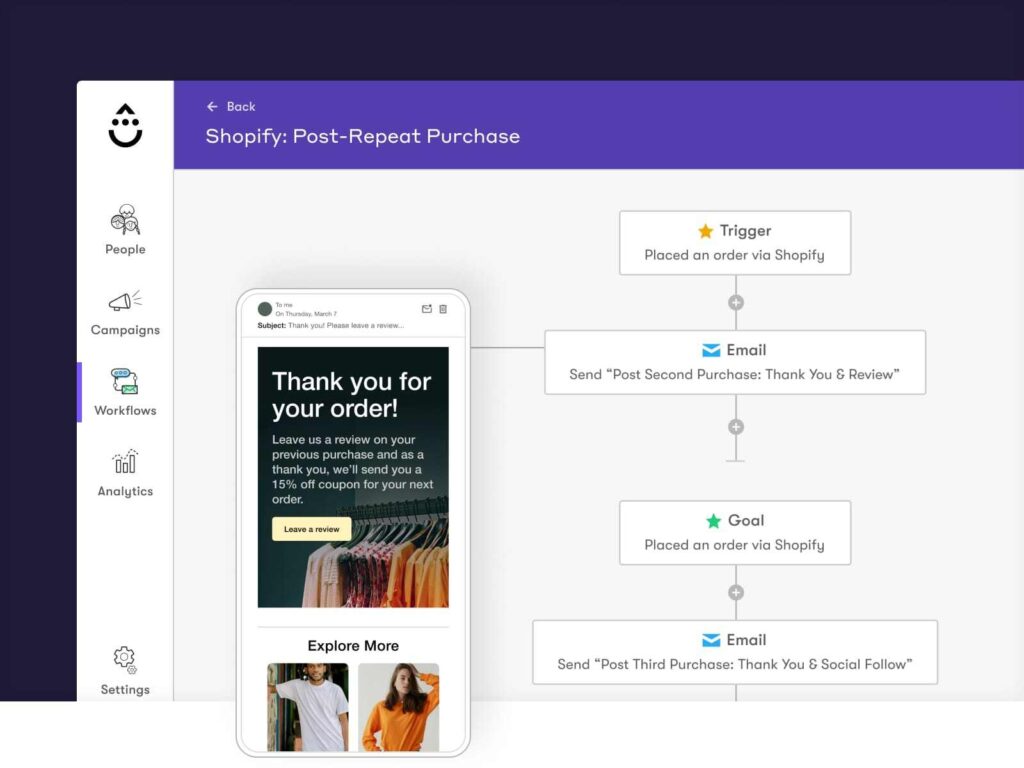
Email marketing is one of the most important marketing channels that helps businesses maintain relationships with customers and increase revenue. Below is a list of the Top 10 leading Email Marketing tools today, helping you optimize your email marketing campaigns effectively.
1. Mailchimp
⭐ User rating: 4.5/5
Mailchimp is one of the most popular email marketing platforms, offering an intuitive and easy-to-use interface with many powerful automation features. It is suitable for both small and large businesses.

Pros:
✅ Free for the first 500 email addresses.
✅ Integrates well with platforms like WordPress and Shopify.
✅ Effective marketing automation with an easy setup process.
✅ Detailed reports on campaign performance.
2. HubSpot Email Marketing
⭐ User rating: 4.7/5
As part of the HubSpot ecosystem, this tool personalizes emails based on user behavior, providing powerful support for inbound marketing campaigns.

Pros:
✅ User-friendly interface.
✅ Integrated with CRM for efficient customer management.
✅ Supports detailed analysis and email content optimization.
✅ Integrated with chatbots and marketing automation.
3. Constant Contact
⭐ User rating: 4.3/5
A great email marketing tool for small businesses, offering professional email templates and making it easy to set up successful campaigns.

Pros:
✅ Rich template library, easy to customize.
✅ Integrates with social media.
✅ Real-time email performance analysis.
✅ 24/7 customer support via chat and phone.
4. GetResponse
⭐ User rating: 4.4/5
GetResponse is a powerful email marketing solution with automation, landing page builders, and webinar features.

Pros:
✅ Smart email automation.
✅ A/B testing for campaign optimization.
✅ Integrates with e-commerce and CRM platforms.
✅ Professional landing page creation.
5. ActiveCampaign
⭐ User rating: 4.6/5
ActiveCampaign is an email marketing platform with powerful personalization capabilities, helping you optimize every marketing campaign.

Pros:
✅ AI-powered email marketing.
✅ Strong CRM integration.
✅ Advanced sales automation tools.
✅ Tracks and analyzes customer journeys.
6. AWeber
⭐ User rating: 4.2/5
One of the oldest email marketing tools, AWeber offers easy-to-use drag-and-drop functionality and beautiful email templates.

Pros:
✅ Large, easy-to-edit template library.
✅ Detailed email analytics.
✅ Excellent customer support.
✅ Integrates with major e-commerce platforms.
7. ConvertKit
⭐ User rating: 4.5/5
Designed for bloggers and content creators, ConvertKit helps build email lists and automate campaigns effortlessly.

Pros:
✅ Intuitive, easy-to-use interface.
✅ Powerful email marketing funnel builder.
✅ Easy integration with WordPress and Shopify.
✅ Supports tagging for precise email segmentation.
8. Sendinblue
⭐ User rating: 4.4/5
A cost-effective email marketing tool offering SMS marketing, automated emails, and CRM.

Pros:
✅ Supports transactional emails.
✅ Smart email list segmentation.
✅ Free plan for 300 emails/day.
✅ Multi-channel integration, including SMS marketing.
9. Drip
⭐ User rating: 4.5/5
Designed for e-commerce businesses, Drip personalizes email marketing and boosts conversion rates.

Pros:
✅ Integrates with WooCommerce, Shopify, and more.
✅ Automates emails based on user behavior.
✅ Advanced analytics with conversion tracking.
✅ Powerful personalization tools.
10. Benchmark Email
⭐ User rating: 4.3/5
A user-friendly platform with advanced email customization features.

Pros:
✅ Drag-and-drop email editor.
✅ Detailed campaign performance reports.
✅ Integrates with over 1,500 applications.
✅ Excellent customer support.
Conclusion
Choosing the right email marketing tool depends on your business size, budget, and needs. If you’re a startup, Mailchimp or Sendinblue are excellent choices. If you need advanced personalization, ActiveCampaign or Drip will help optimize your campaigns effectively.
Which email marketing tool do you use? Share your experience in the comments below!

Great post! This is so helpful! You picked a key topic to focus on. I made a free guide that shows how to build an email marketing plan step by step. It covers setting goals, tracking results, and fixing common mistakes. Visit the link to see it. Thanks for sharing such helpful, straightforward tips!